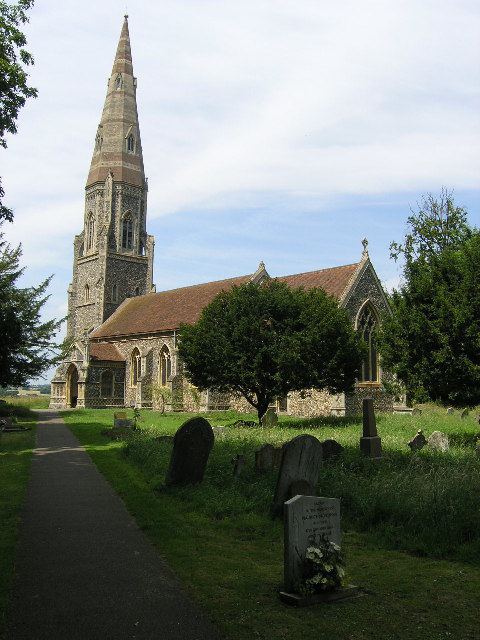Population 808 (2011) Civil parish Great Finborough Local time Thursday 9:38 AM | OS grid reference TM0157 Sovereign state United Kingdom Dialling code 01449 | |
 | ||
Weather 13°C, Wind W at 26 km/h, 75% Humidity | ||
Great Finborough is a civil parish and rural village of 755 people(2001) increasing to 808 at the 2011 Census in Suffolk, England; about 3 miles (4.8 km) south west of Stowmarket and near one of the sources of the River Gipping. It has two schools, a pub and an active church.
Contents
- Map of Great Finborough Stowmarket UK
- Public Transport
- Schools
- Religion
- History
- Bog Race
- Notable People
- References
Map of Great Finborough, Stowmarket, UK
Public Transport
Route 461 bus service operated by Beeston's connects Finborough with Sudbury, Bildeston and Stowmarket on Tuesday and Thursday only.
Schools
Great Finborough has a Primary School, Great Finborough CEVC Primary School, founded in 1873. The original buildings, to which two new classrooms were added in 2000. The school's catchment area includes Great Finborough and the neighbouring village of Buxhall; places are offered first to children from the two villages and then to others from beyond the catchment area up to the school's intake limit. The primary school is a feeder for Stowmarket High School, to which pupils transfer at the age of 11.
The independent school Finborough School is also located in the village. About 250 pupils attend the school, which includes Nursery, Pre-Prep, Prep School, Senior School and Sixth Form.
Religion
St Andrew's church is the Church of England church. The current church is Victorian, apart from the Tudor porch, and the spire nearly reaches 300ft. There has been a place of worship on the site for over 1000 years and in 1086 the church as well as Finborough Hall were recorded in the Domesday Book.
There was also a Congregational chapel built in 1862 which is now a private residence.
History
Inside St Andrew's church the side chapel is filled with monuments dedicated to the Wollaston family who played a big part in the Finborough Estate. They owned the Estate for a century and there are monuments dedicated to nearly all the family members. The Pettiward family also played a big role, they took control of the estate after the Wollaston's and owned it until the mid 1930s.
The connection with the Pettiward family meant that it gave its name to Finborough Road in Earls Court, London, developed as part of the Pettiward Estate and later the Finborough Theatre.
Bog Race
The Bog Race is a key part of village life. It happens on Easter Monday every year. It is a battle between Haughley and Great Finborough. The race starts at the pub, The Chestnut Horse, where 15 or so men from Haughley and Great Finborough get considerably drunk and are taken to a nearby farm, Boyton Hall, where they have to race over the fields, about a mile, to get to the pub with the scroll. The first man at the pub with the scroll wins and is declared the winner over-all and then, that village has won for that year.
